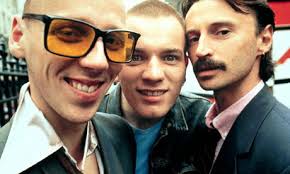Although this film isn't of the social realism genre we are studying we felt that some of the things they used in their trailer really worked well. The Mise-en-scene used in the first part of the trailer really drew the audience in and made it feel as if we were part of the party going on.
The first scene was also shot on a handheld camera which gave us as the audience the impression that it was just a normal party that a friend was filming on his hand-held camcorder.
The trailer also contained quite sharp cuts towards the end which began to create some tension. this really worked because the audience didn't expect the trailer to suddenly become action and hyper-real. Whereas social realism films tend to rely more on non-diegetic sounds and music to create tension. For example, by inputting a simple fast paced instrumental whilst editing can create an obvious effect, whether that be, tension, excitement or fear that was non-existent without the soundtrack.
One example of this comes from Kidulthood 5.56-6.24.
Another example of this from Kidulthood comes at 8.47-10.45
The use of two different soundtracks in this scene creates two different feelings for the audience, the first one creates suspense and the second soundtrack with speech creates more of an exciting affect for the audience as its fast paced and the character on the scene is on the move.
http://www.youtube.com/watch?v=PxtXbH-7v0k
They also used low lighting, this foreshadowed what was going to happen later on in the trailer. As later in the trailer it becomes more hyper-real by using CGI and special effects. Which is in complete contrast to the English Social Realism genre who because of their low production values, rely on natural lighting and normally just use what they have to create an effect. This is an example of the difference between the Hollywood industry and the British film industry, and how budgets divide them. An example of this would come from the two films I have been comparing. The budgets speak for themselves in terms of the amount they had to work with and really anchors the difference between both Hollywood & British Film and also the Horror and Social Realism genre.
Cloverfield - $25,000,000
Kidulthood - £600,000
The trailer also used live sounds to create the party scene which made the scene more realistic; with very little use of sound effects in this scene.

http://www.youtube.com/watch?v=&safe=activeIqQzvfn_s30



